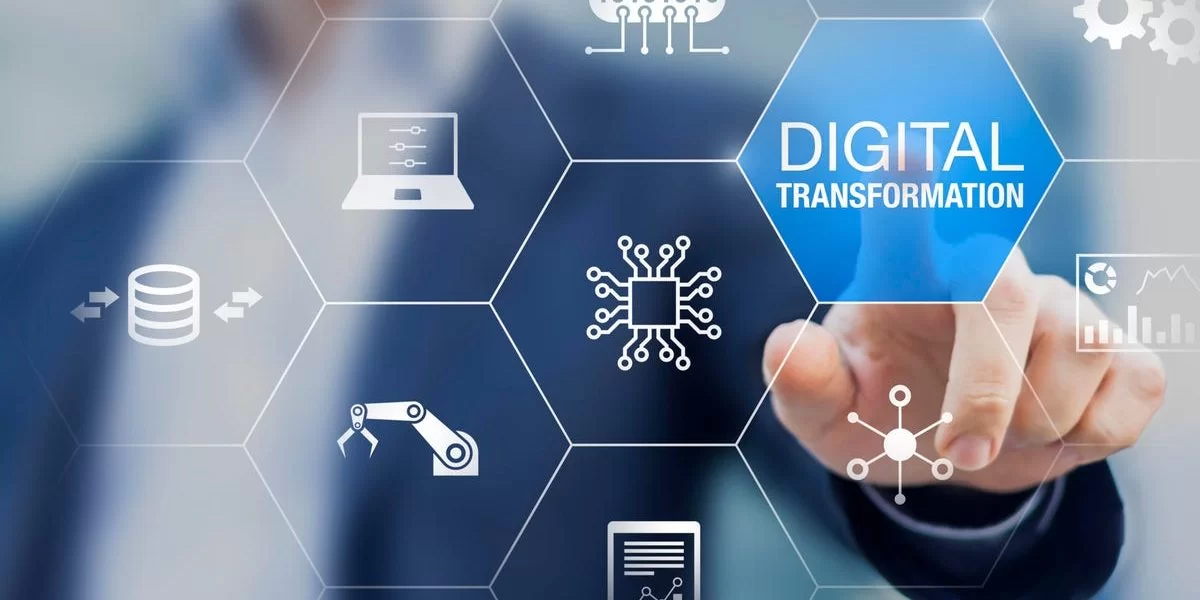
Digital transformation has become an inevitable part of modern business and everyday life. With the rapid development of digital technologies, it is crucial for businesses to stay competitive and offer innovative solutions by closely following these transformation trends. So, which digital transformation trends will stand out in the coming years? In this article, we will explore five major digital transformation trends that will shape the future.
Artificial intelligence (AI) refers to computer systems that can perform tasks that typically require human intelligence, such as decision-making and problem-solving. Machine learning (ML) is a subset of AI that enables systems to learn and improve from data without being explicitly programmed. AI and ML are revolutionizing many industries today.
AI and ML offer significant advantages in data analysis, predictive analytics, and personalized customer experiences. These technologies enable businesses to make more accurate and faster decisions, thereby increasing efficiency and productivity.
AI and ML are essential in various sectors, including healthcare, finance, and retail. For instance, in healthcare, they help in early disease detection; in finance, they aid in fraud detection; and in retail, they analyze customer behavior. Additionally, they are widely used in manufacturing processes for quality control and supply chain management.
The future of AI and ML looks promising as they are expected to be integrated into more business processes. They hold significant potential in areas such as autonomous vehicles, smart cities, and personalized healthcare services.
Robotic process automation (RPA) involves using software robots to automate routine and repetitive business processes. These robots perform specific tasks without human intervention, making business processes more efficient.
RPA accelerates business processes, reduces error rates, and allows employees to focus on more strategic tasks. This results in increased productivity and reduced operational costs for businesses.
RPA is utilized in various departments, including accounting, finance, human resources, and customer service. For example, a company achieved a 30% annual time and cost savings by automating invoice processing through RPA.
The future of RPA involves integrating more complex business processes and combining it with artificial intelligence to offer smarter automation solutions. This will lead to significant productivity gains and cost savings in the business world.
Virtual reality (VR) immerses users in a completely virtual world, while augmented reality (AR) overlays digital information onto the real world. Both technologies enrich user experiences and offer next-generation interactive experiences.
VR and AR allow users to interact with virtual environments, offering unique experiences in various fields, from education to entertainment. For example, VR-based training provides hands-on practice, while AR enriches real-world experiences with additional digital information.
In education, VR and AR offer interactive and engaging learning experiences for students. In business, they provide significant advantages in virtual meetings, product design, and prototyping. VR and AR technologies are particularly transformative in fields like architecture and engineering.
The future of VR and AR looks bright as these technologies are expected to become more advanced and widespread. With the advent of 5G technology, VR and AR will become faster and more responsive, enabling more efficient use.
The Internet of Things (IoT) refers to a network of interconnected devices that communicate with each other over the internet. These devices collect and analyze data to provide intelligent solutions.
IoT is used in a wide range of applications, from smart home systems to industrial automation. For example, smart thermostats save energy, security cameras enhance home security, and production line sensors increase manufacturing efficiency.
In industry, IoT is used to monitor and optimize production processes and track the health of plants and animals in agriculture. In daily life, IoT applications include smart home devices, wearable technologies, and health monitoring devices.
The future of IoT is promising, with more devices expected to be connected to the internet. This will lead to integrated solutions with data analytics and artificial intelligence, making our lives more comfortable and efficient.
5G is the fifth generation of mobile communication technology. It offers higher speeds, lower latency, and the ability to connect more devices simultaneously.
5G is critical for technologies like IoT, VR, and AR. It provides higher data speeds and lower latency, allowing these technologies to be used more efficiently and effectively.
5G will accelerate digital transformation and enable new business models. Innovations like smart cities, autonomous vehicles, and industrial automation will be possible thanks to 5G.
5G is expected to revolutionize healthcare, education, entertainment, and many other fields in the future. Innovations such as remote surgical operations, virtual classrooms, and real-time gaming experiences will be made possible with 5G.
Digital transformation is fundamentally changing the business world and daily life. Trends like artificial intelligence, robotic process automation, virtual and augmented reality, the Internet of Things, and 5G technology will shape our future. Keeping up with these trends and integrating them into business strategies is crucial for companies to remain competitive.
1. What is digital transformation?
Digital transformation involves redesigning and optimizing business processes and models with digital technologies.
2. How do artificial intelligence (AI) and machine learning (ML) work?
AI enables computers to perform tasks that typically require human intelligence, while ML allows these systems to learn and improve from data.
3. In which areas is RPA used?
RPA is used in many areas, such as accounting, human resources, and customer service, to automate routine business processes.
4. What is the difference between VR and AR?
VR immerses users in a completely virtual world, while AR overlays digital information onto the real world.
5. What are the advantages of 5G technology?
5G offers higher speeds, lower latency, and the ability to connect more devices simultaneously.